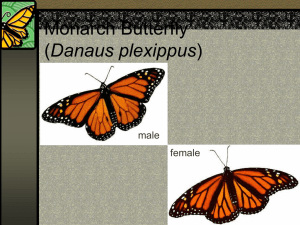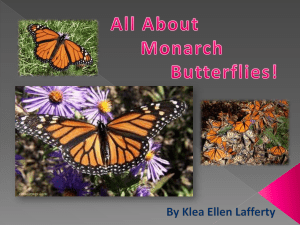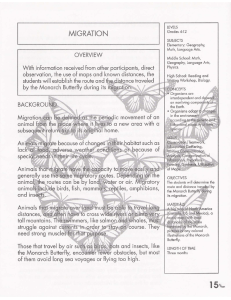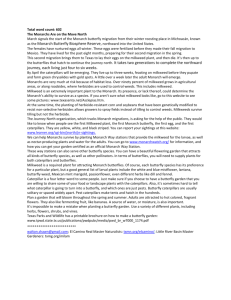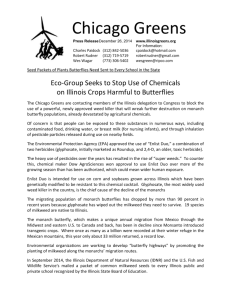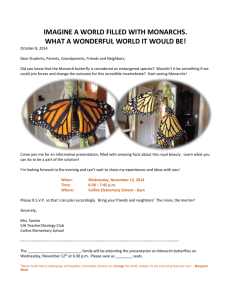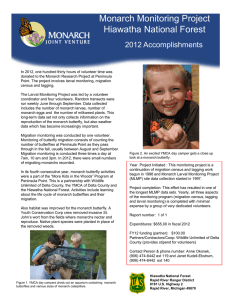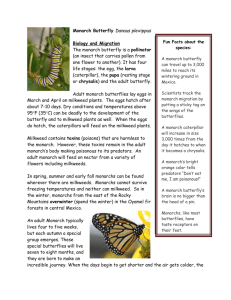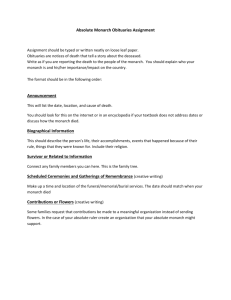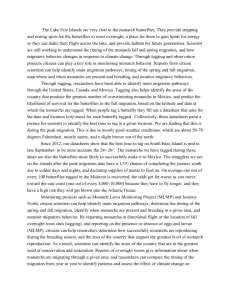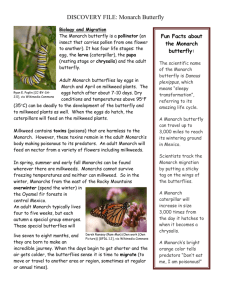Annual Migration Pattern Changes due to Climate Change
advertisement
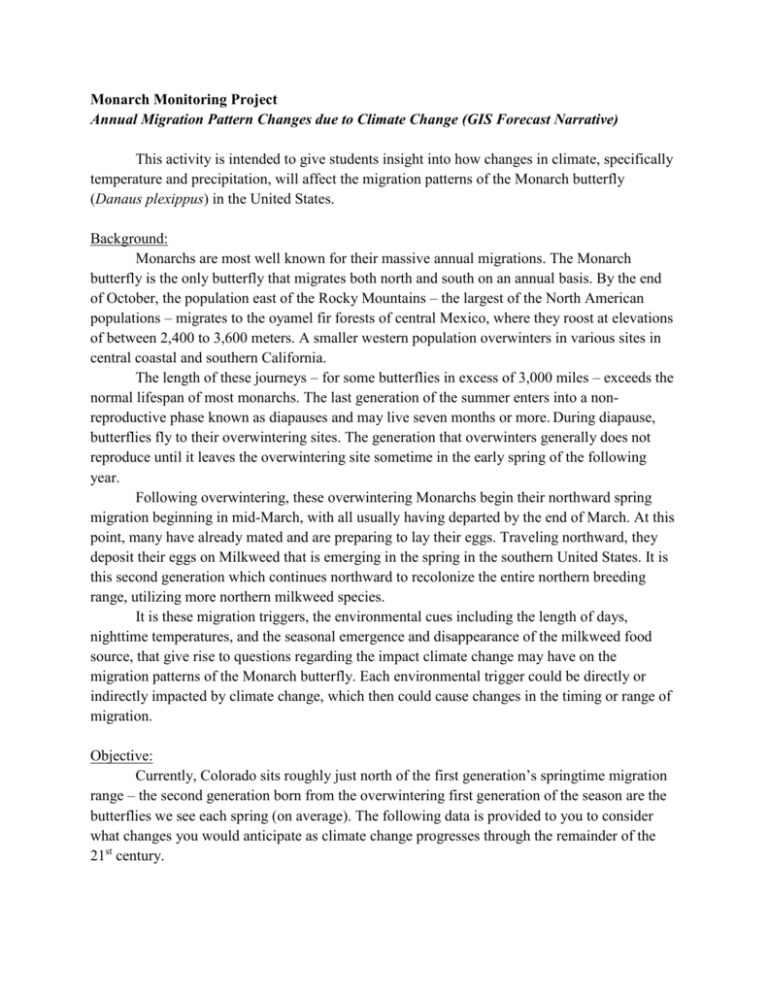
Monarch Monitoring Project Annual Migration Pattern Changes due to Climate Change (GIS Forecast Narrative) This activity is intended to give students insight into how changes in climate, specifically temperature and precipitation, will affect the migration patterns of the Monarch butterfly (Danaus plexippus) in the United States. Background: Monarchs are most well known for their massive annual migrations. The Monarch butterfly is the only butterfly that migrates both north and south on an annual basis. By the end of October, the population east of the Rocky Mountains – the largest of the North American populations – migrates to the oyamel fir forests of central Mexico, where they roost at elevations of between 2,400 to 3,600 meters. A smaller western population overwinters in various sites in central coastal and southern California. The length of these journeys – for some butterflies in excess of 3,000 miles – exceeds the normal lifespan of most monarchs. The last generation of the summer enters into a nonreproductive phase known as diapauses and may live seven months or more. During diapause, butterflies fly to their overwintering sites. The generation that overwinters generally does not reproduce until it leaves the overwintering site sometime in the early spring of the following year. Following overwintering, these overwintering Monarchs begin their northward spring migration beginning in mid-March, with all usually having departed by the end of March. At this point, many have already mated and are preparing to lay their eggs. Traveling northward, they deposit their eggs on Milkweed that is emerging in the spring in the southern United States. It is this second generation which continues northward to recolonize the entire northern breeding range, utilizing more northern milkweed species. It is these migration triggers, the environmental cues including the length of days, nighttime temperatures, and the seasonal emergence and disappearance of the milkweed food source, that give rise to questions regarding the impact climate change may have on the migration patterns of the Monarch butterfly. Each environmental trigger could be directly or indirectly impacted by climate change, which then could cause changes in the timing or range of migration. Objective: Currently, Colorado sits roughly just north of the first generation’s springtime migration range – the second generation born from the overwintering first generation of the season are the butterflies we see each spring (on average). The following data is provided to you to consider what changes you would anticipate as climate change progresses through the remainder of the 21st century. Directions: 1. Go to the Monarch Monitoring Project’s Climate Change and Monarch Butterflies page located at https://sites.google.com/a/cherrycreekschools.org/creekgardens/monarch-larvamonitoring-project/climate-change-and-monarch-butterflies 2. There you will see two images depicting modeled climate change for temperature (left image) and precipitation (right image). Click on the left image to be taken to the temperature anomalies data page. 3. This page contains GIS images of temperature and precipitation anomalies for various climate change scenarios a. For more information on the scenarios used for this data, see the attached document on the same page 4. Your teacher will either assign you a climate scenario or allow you to choose the scenario of your choice. a. Circle your IPCC climate model scenario: B1 / A1B / A2 / IPCC 5. Click to view the Spring End of Century Anomaly GIS image that corresponds with your IPCC climate model scenario a. The image will appear as a colored map of the United States. Blue colors indicate small spring seasonal temperature anomalies (compared to 1980-1999 observed temperatures) while red colors indicate higher degree anomalies b. A key for temperature changes also appears at the top of the page where the GIS images are found 6. On a separate piece of paper, write a paragraph that touches on how each of the following will be affected by the forecasted temperatures seen in this image: a. Monarch spring distribution by 1st and 2nd generation b. Milkweed emergence and growth c. Climatic hazards faced by Monarch during their migration 7. Continuing on the same piece of paper (more pages may be used if necessary), write a narrative of the environmental impacts faced by the Monarch butterfly during their spring migration due to the forecasted climates during the entire 21st century. To do this, you will need to view all six GIS images for your IPCC climate model scenario (Near Term, Mid-Century, and End of Century, all for both temperature and precipitation). You will want to consider the effects that temperature and precipitation will have directly on the Monarch butterflies as well as the milkweed on which they depend on for food as larva. Use all of the information that you have learned thus far on how Monarchs live and develop to assist you in making this narrative.
